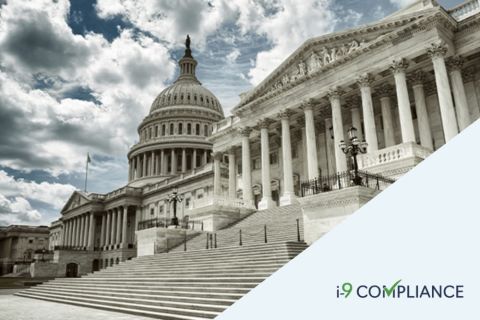DHS Introduces Greater Flexibilities for Employers Suffering From Pandemic Related Challenges

The Department of Homeland Security (DHS) has recently released more extensive flexibilities for completing Form I-9 in addition to extending certain existing flexibilities introduced under the previous administration. These flexibilities are intended to ease many of the burdens that employers are still facing due to the effects of the pandemic.
One of the most significant recent developments is the recent decision by the U.S. Citizenship and Immigration Services to implement a new Temporary Final Rule which will increase the automatic extension of employment authorization documents (EAD) for certain non-U.S. citizen workers to a total of 540 days.
Previously, many categories of workers that filed a timely application for renewal were granted an automatic extension of 180 days in order to prevent disruption of employment during the period between the expiration of the EAD and a final decision concerning their application for renewal. However, due to the pandemic and existing issues within the USCIS, processing delays grew considerably, resulting in an enormous backlog of pending cases and some workers waiting more than a year for a final decision.
Before the implementation of this TFR, employers would have to terminate employees that could not provide an updated EAD prior to the lapse of the 180-day extension period. Now the 540-day extension will allow many employees that file a timely application to avoid gaps in their employment authorization period. This will also include workers whose EADs would have already expired prior to this TFR.
The DHS has also extended the policy introduced under the prior administration of permitting employers to defer the physical inspection of a remote worker’s documentation necessary to complete the Form I-9. Under the policy, which has now been renewed through October 31st, 2022, employers may satisfy the I-9 inspection requirement through virtual means such as video calls, email, fax, or others.
Though this flexibility allows the employer to defer the physical inspection requirements, it does not allow them to skip over them completely. Once the policy ends or an employee returns to an employer’s workplace on a regular, consistent, or predictable basis, their documents must be reinspected physically within three business days.
Though these flexibilities can be of immense value to employers under the continued difficulties imposed by the pandemic, implementing them can be complex. One of the best ways to help is to invest in an electronic I-9 management tool. This can guide HR personnel through every step of the employment eligibility verification process and ensure uniform completion of the Form I-9.
Learn more about automating your employment eligibility verification and ensuring compliance with I-9 Compliance.